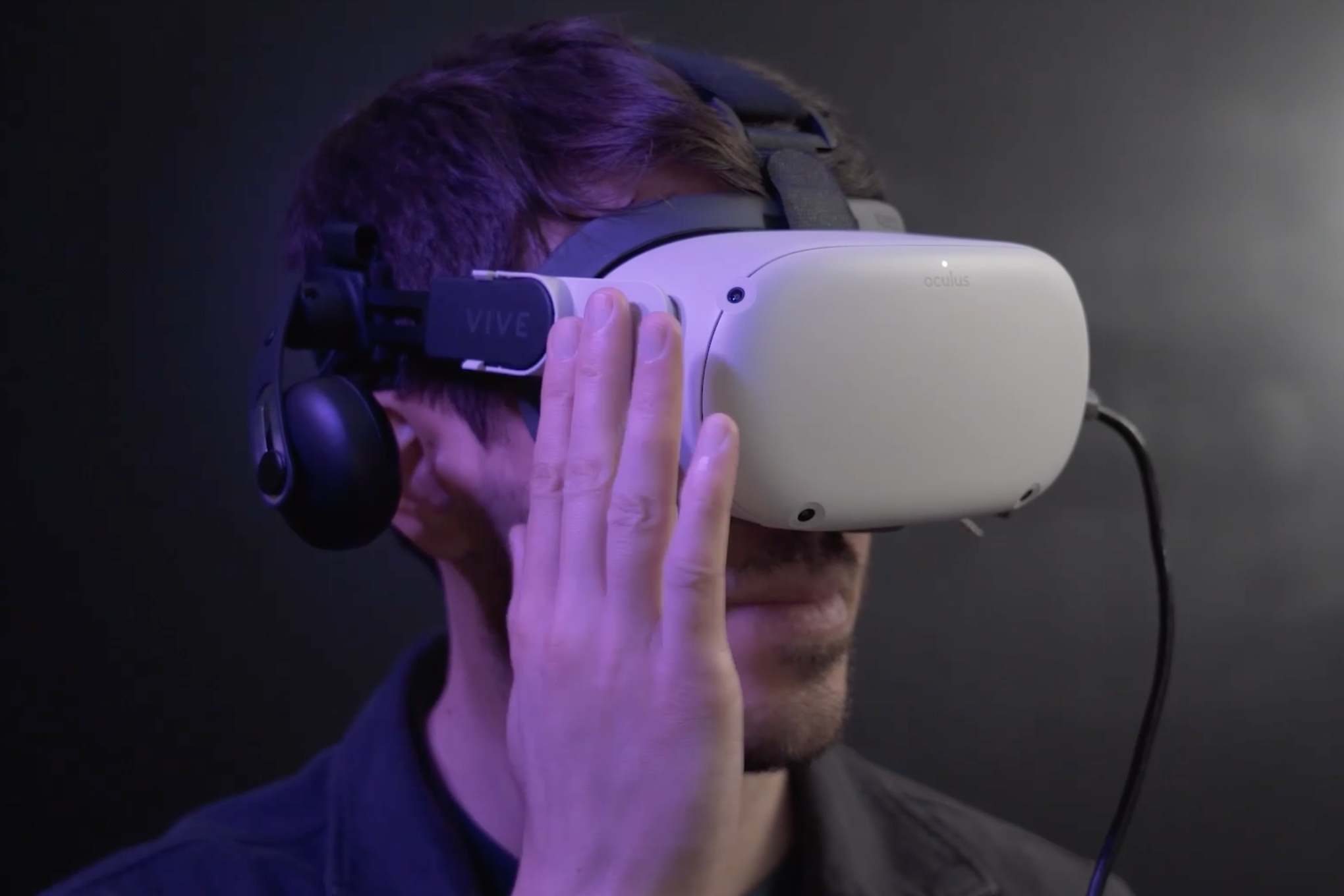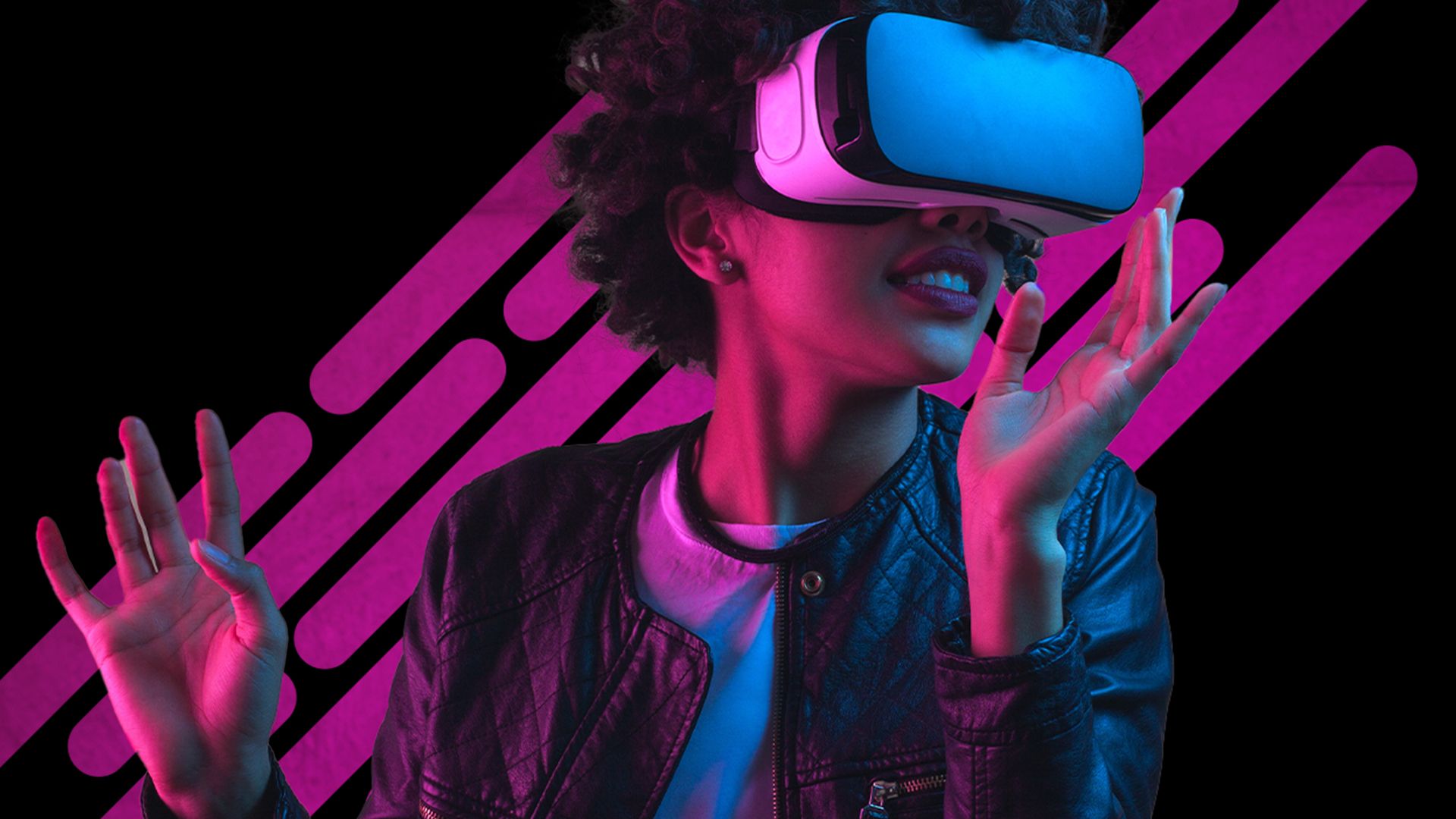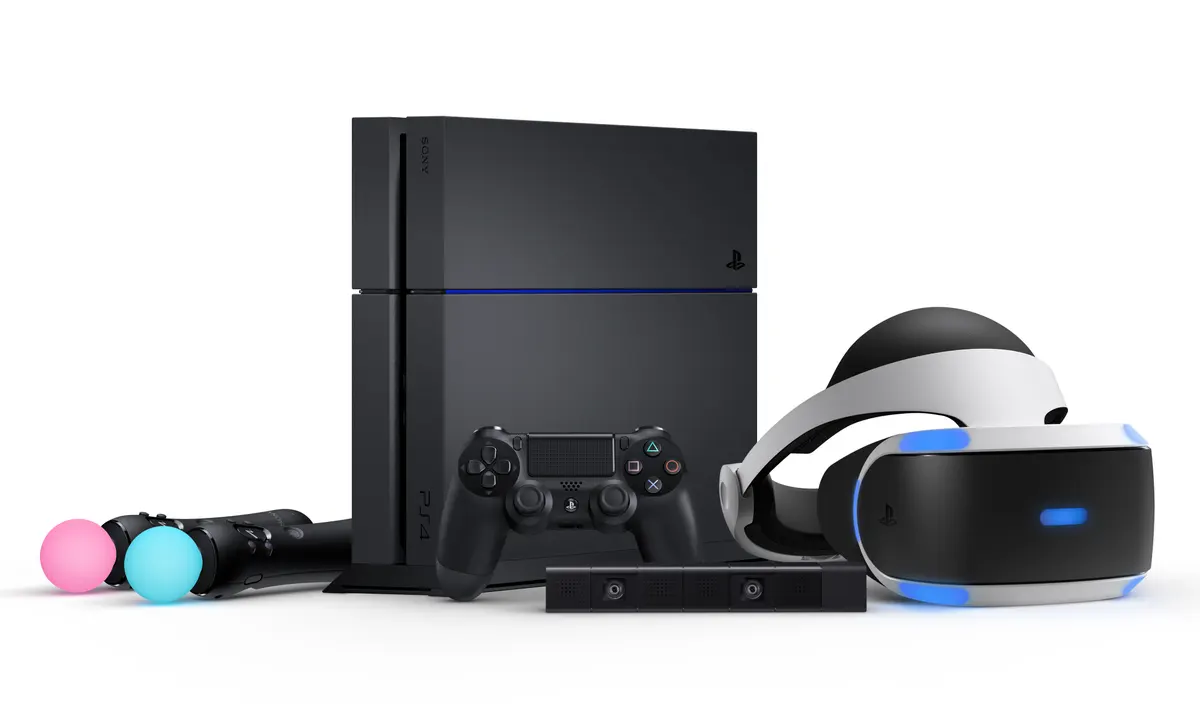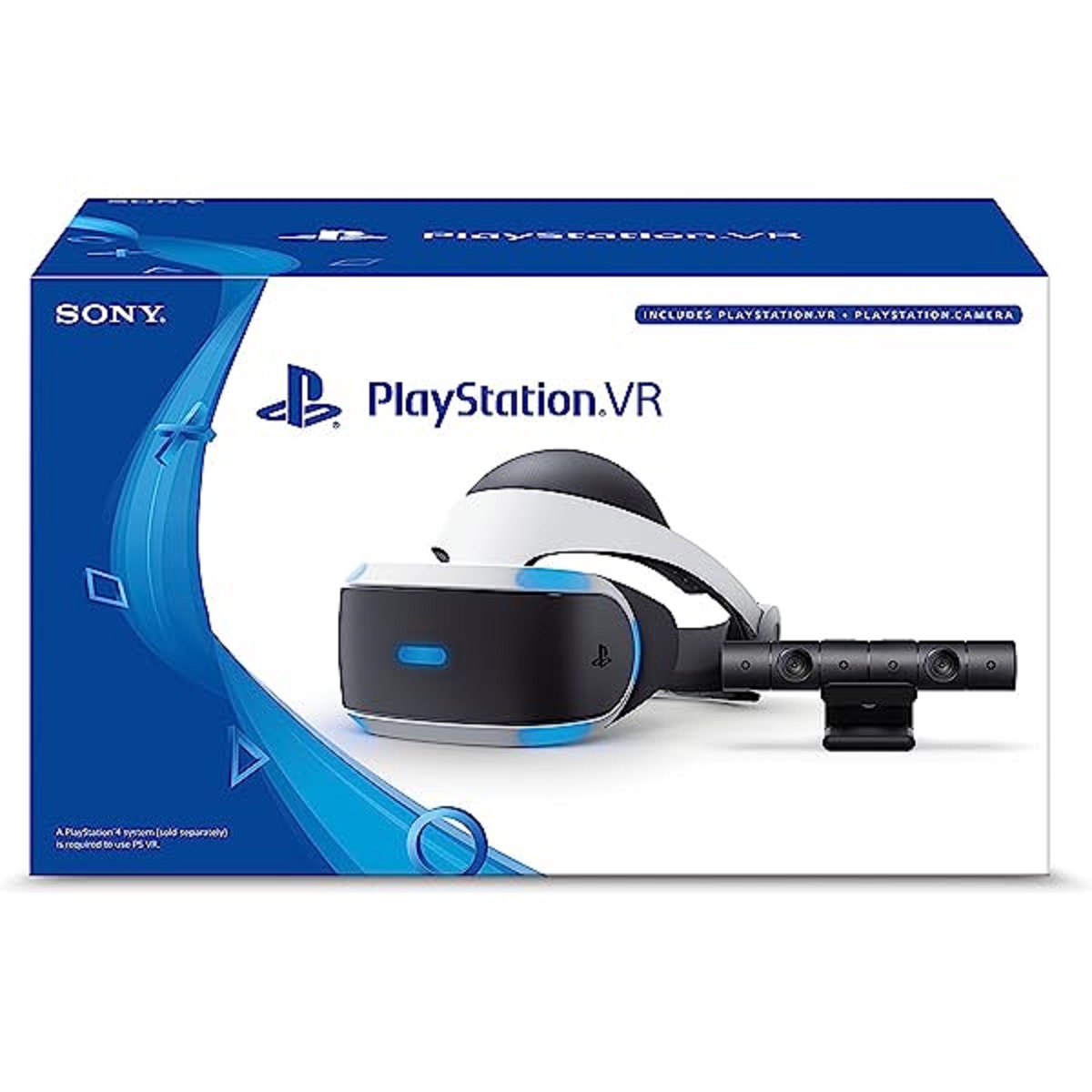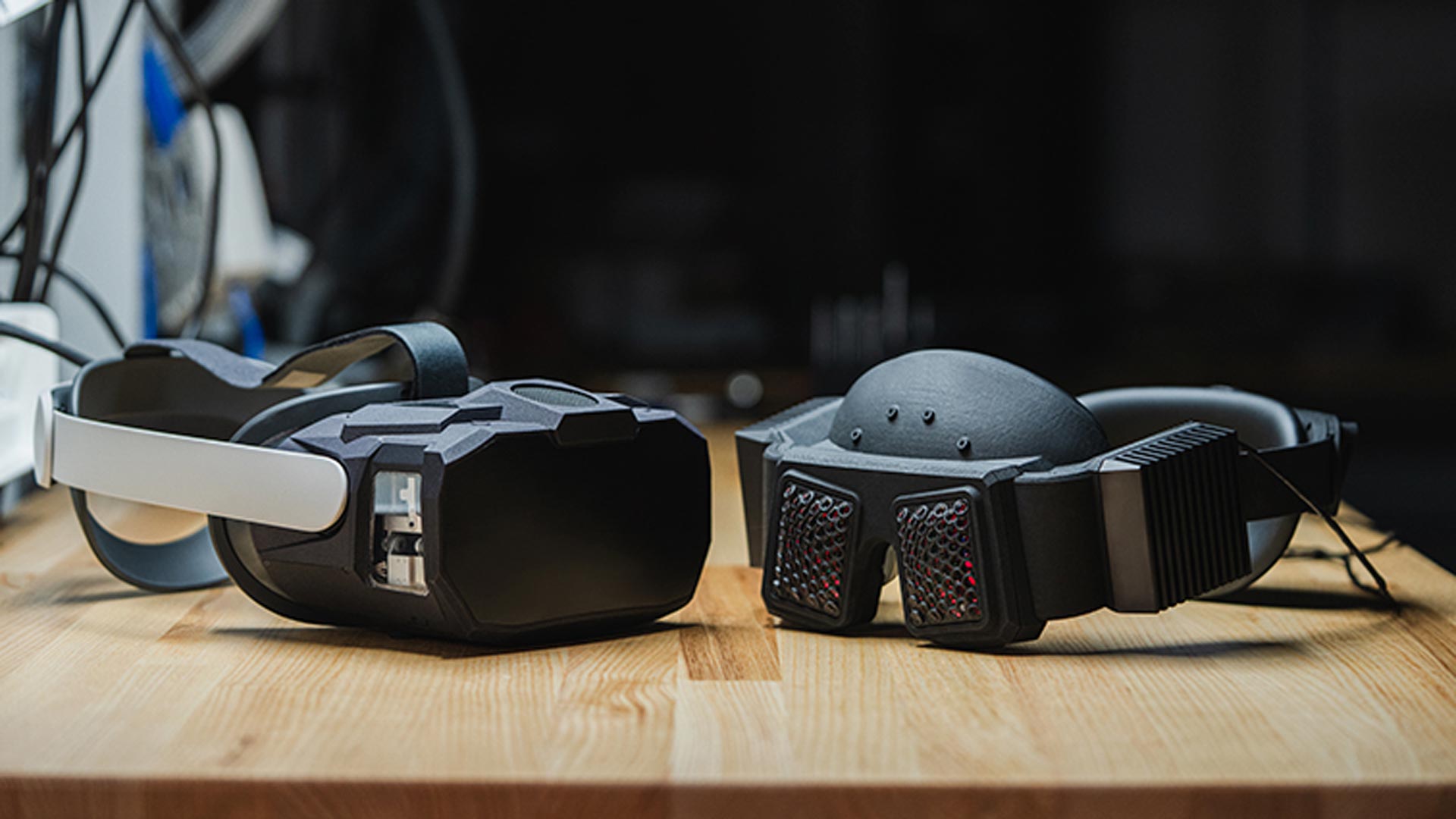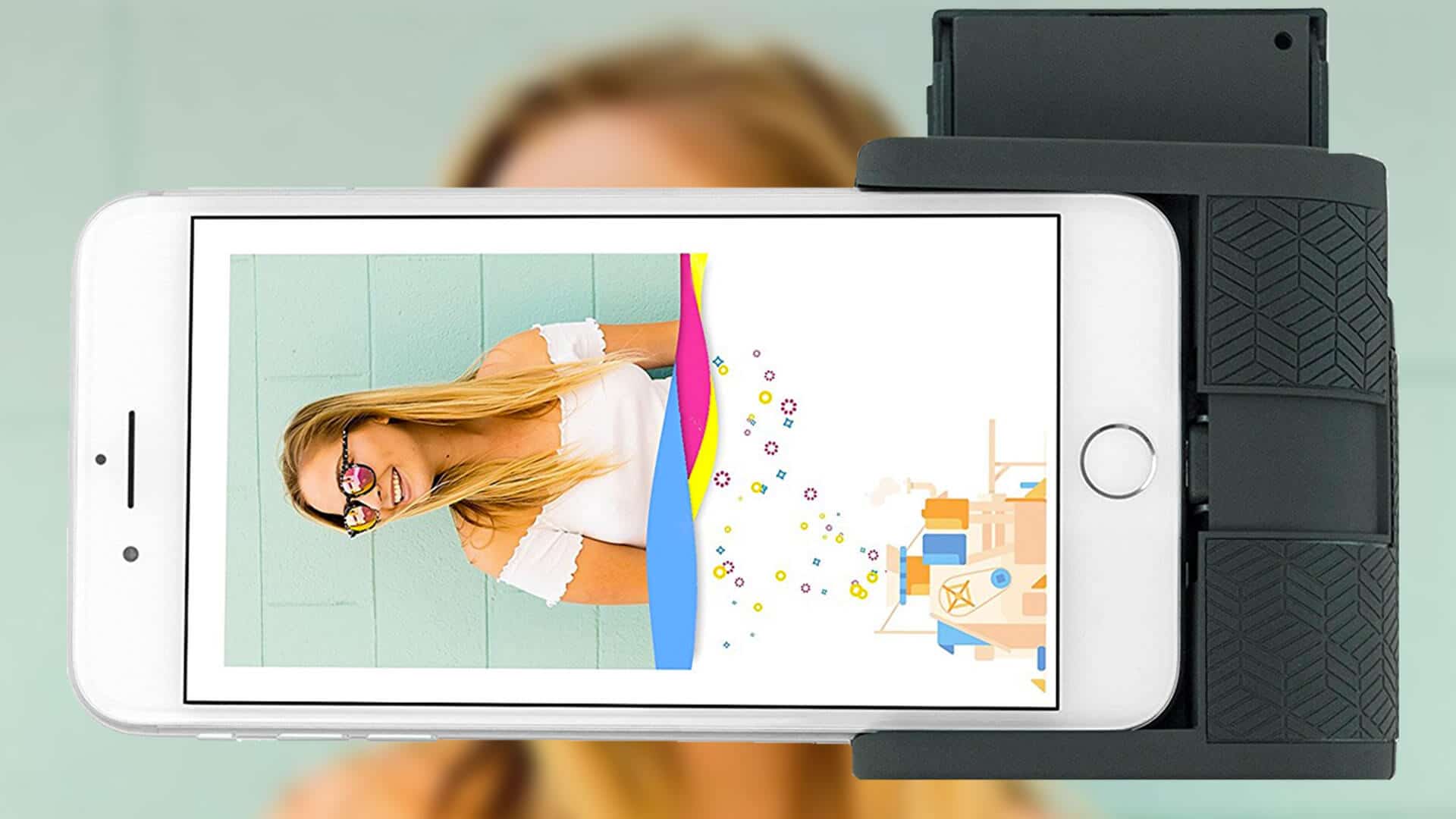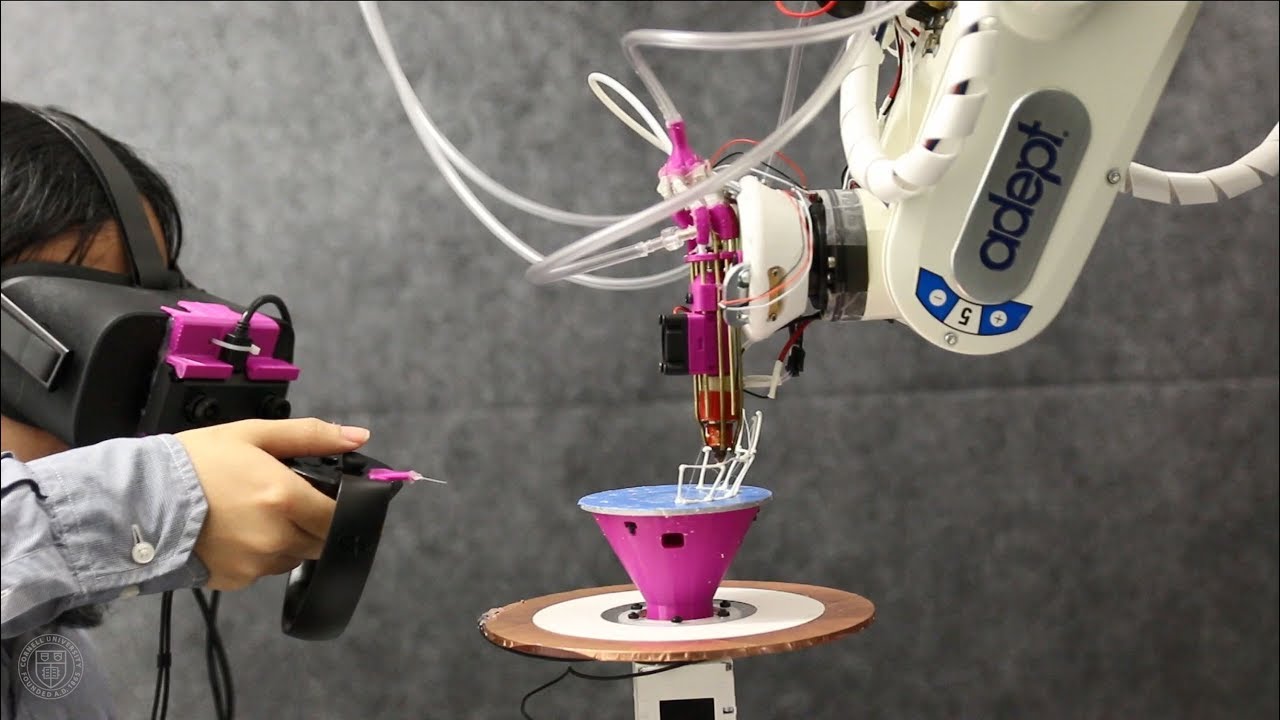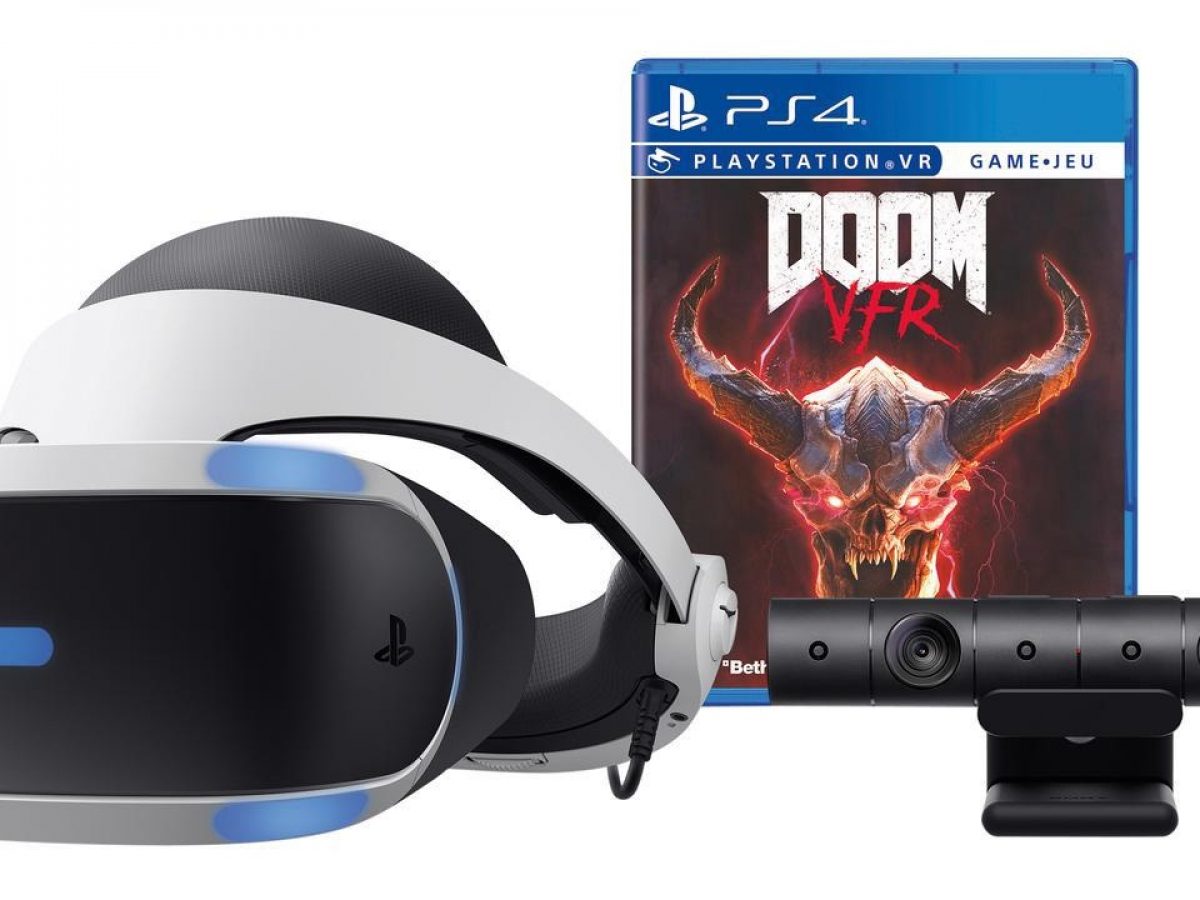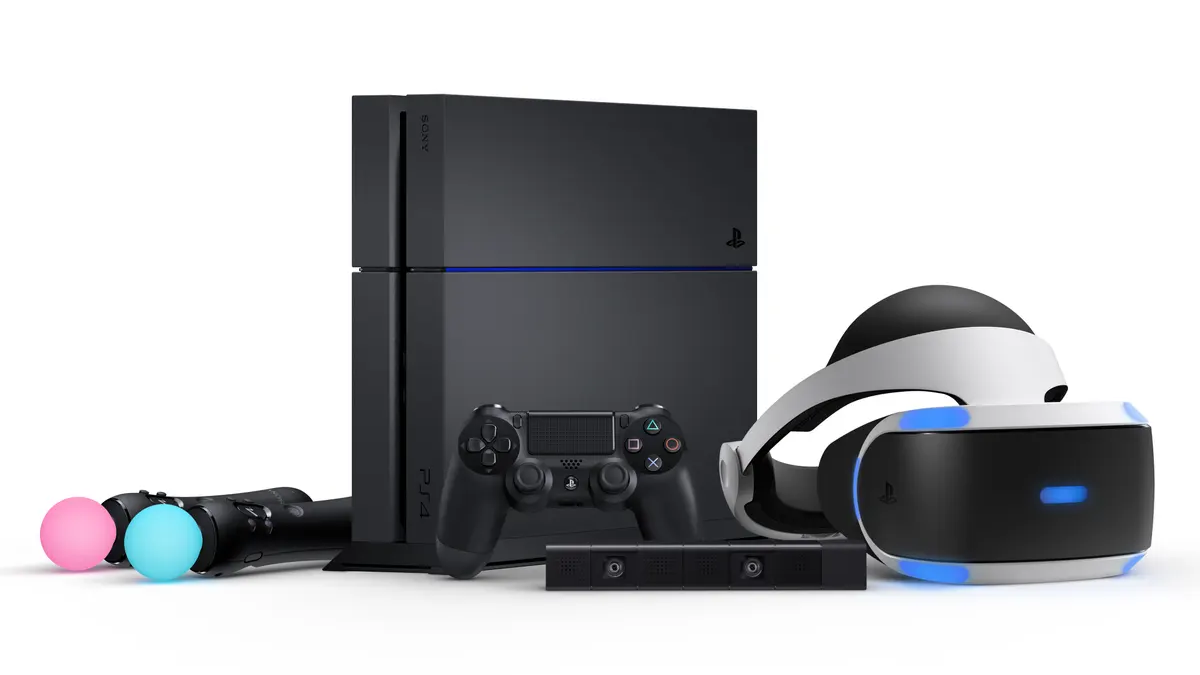What Does The Pass Through Functionality Of A Virtual Reality Headset Do
The pass through functionality of a virtual reality headset is a feature that allows users to see the real world while wearing the headset. It enhances the virtual reality experience by merging the virtual and real worlds, providing a more immersive and seamless user experience.
With pass through functionality, a virtual reality headset uses built-in cameras to capture the surroundings and display it in real-time on the headset’s screen. This enables users to stay connected with the outside world without having to remove the headset.
One of the primary benefits of pass through functionality is its ability to enhance safety and awareness. By being able to see their surroundings, users can avoid obstacles or hazards in the real world while fully immersed in the virtual reality experience. This feature is particularly important for users playing games or engaging in activities that require movement or interaction.
In addition, pass through functionality facilitates the transition between the virtual reality and reality seamlessly. If users need to step out of the virtual world momentarily, they can easily activate pass through mode to view their surroundings without taking off the headset completely. This eliminates the need for constant removal and readjustment of the headset, allowing for a smoother and more convenient user experience.
Pass through functionality also improves user comfort during extended periods of virtual reality use. It prevents users from feeling disoriented or disconnected from their environment by providing visual cues of the real world. This can help alleviate feelings of motion sickness or discomfort that some users may experience during virtual reality sessions.
In summary, the pass through functionality of a virtual reality headset allows users to see the real world while wearing the headset, merging virtual and reality seamlessly. It offers numerous benefits, including enhanced safety and awareness, smoother transitions between virtual reality and reality, and improved user comfort. With this feature, virtual reality becomes even more immersive and enjoyable, providing users with a truly remarkable experience.
Introduction
Virtual reality (VR) has revolutionized the way we experience digital content, transporting us into immersive and interactive virtual worlds. One of the key advancements in VR technology is the pass through functionality of virtual reality headsets. This feature allows users to have a glimpse of the real world while wearing the headset, bringing a new level of connectivity and blending the boundaries between virtual and reality.
In this article, we will explore the pass through functionality of a virtual reality headset and its purpose. We will delve into how it works, the advantages it offers, and how it enhances the overall VR experience for users.
Virtual reality headsets have typically been designed to fully immerse users in a virtual environment, allowing them to escape the confines of reality and explore simulated worlds. However, this can sometimes lead to a sense of disconnection from the physical surroundings. The introduction of pass through functionality addresses this limitation, providing users with a way to stay connected to the real world while enjoying the benefits of virtual reality.
With pass through functionality, virtual reality headsets incorporate built-in cameras that capture live video of the surrounding environment. This video feed is then overlaid onto the virtual experience, allowing users to see real-time footage of their immediate surroundings without having to remove the headset. The blended view created by pass through functionality enhances safety, awareness, and comfort during VR sessions.
Throughout this article, we will explore the multifaceted nature of pass through functionality and the ways in which it enriches the virtual reality experience. From improving safety and awareness to facilitating seamless transitions between virtual and real worlds, pass through functionality offers a host of benefits to users.
So, let’s dive deeper into the world of pass through functionality and discover how it enhances the virtual reality experience in ways we never thought possible.
What is Pass Through Functionality?
Pass through functionality is a feature incorporated into virtual reality headsets that allows users to see the real world while wearing the headset. It bridges the gap between the virtual and physical realms, creating a seamless blend of both worlds.
Virtual reality headsets typically use screens and lenses to create immersive virtual environments. However, these headsets can sometimes completely obscure a user’s vision of their actual environment. Pass through functionality solves this issue by integrating cameras into the headset design, which capture live video of the surroundings and display it on the headset’s screen.
By utilizing this feature, users can maintain a connection with reality while still enjoying the benefits of virtual reality. The live video feed from the cameras is overlayed onto the virtual scene, allowing users to visually perceive both the virtual environment and the real world simultaneously.
Pass through functionality is often activated by a toggle switch or button on the headset. When activated, the cameras begin capturing video in real-time, and the user can see their surroundings in a transparent or semi-transparent manner on the headset’s display. This enables users to interact with objects or people in the real world without having to remove the headset, enhancing convenience and immersion.
It is important to note that the quality and resolution of the pass through video feed can vary depending on the specific headset model. Some headsets may offer enhanced visual fidelity, while others may provide a more basic representation of the real environment. Regardless, the primary objective of pass through functionality remains consistent – to merge the virtual and real worlds seamlessly.
Overall, pass through functionality transforms virtual reality headsets from closed-off devices to windows that allow users to stay connected with the real world. It opens up new possibilities for interaction and provides a greater sense of awareness and safety. By blending the virtual and physical realms, pass through functionality enhances the overall VR experience, offering users a more versatile, immersive, and enjoyable journey into the world of virtual reality.
How Does Pass Through Functionality Work?
Pass through functionality in virtual reality headsets operates through a combination of hardware, software, and clever design. It allows users to see the real world while wearing the headset by capturing the surrounding environment using built-in cameras and displaying it on the headset’s screen in real-time.
Virtual reality headsets typically incorporate two or more cameras strategically positioned on the front or sides of the device. These cameras function as the eyes of the headset, capturing video footage of the surroundings. The captured video is then processed and displayed on the headset’s screen, overlaying it onto the virtual environment.
The cameras used in pass through functionality are specifically designed for this purpose. They are typically wide-angle lenses, allowing for a broad field of view and capturing a wider area of the real world environment. This helps users have a comprehensive view of their surroundings, reducing blind spots and enhancing awareness during virtual reality experiences.
The captured video is then transmitted to the headset’s screen, where it is superimposed onto the virtual scene using software algorithms. These algorithms blend the real-world footage seamlessly with the virtual content, creating an augmented reality effect that allows users to see both the virtual and physical worlds simultaneously.
The pass through functionality can be activated and deactivated based on user preference. When the feature is turned on, the live video feed from the cameras is displayed on the screen, either in a transparent mode where the virtual content is still visible, or in a semi-transparent mode where the real environment becomes more dominant.
It is worth mentioning that the specific implementation of pass through functionality may vary depending on the virtual reality headset model. Some headsets may offer additional features such as depth perception, allowing for more accurate rendering of the real world. Others may have different modes or settings to customize the visibility and transparency of the pass through video feed.
Overall, pass through functionality relies on the integration of cameras, processing algorithms, and visual display technology to merge the virtual and real worlds seamlessly. By capturing and overlaying the real-world environment onto the headset’s screen, users can stay connected with reality, enhancing their safety, convenience, and overall virtual reality experience.
Benefits of Pass Through Functionality
The pass through functionality of virtual reality headsets offers a range of benefits that enhance the overall VR experience. By allowing users to see the real world while wearing the headset, pass through functionality improves safety, facilitates seamless transitions between virtual and reality, and enhances user comfort.
One of the primary benefits of pass through functionality is its ability to enhance safety and awareness. By providing users with a view of their surroundings, it allows them to effectively navigate their real-world environment while immersed in the virtual. This feature is particularly crucial for users engaging in activities that require movement or interaction, such as gaming or virtual training simulations. Users can avoid obstacles or hazards in the physical world, minimizing the risk of accidents or injuries.
In addition, pass through functionality facilitates seamless transitions between the virtual and real worlds. Users can easily activate the feature to momentarily view their surroundings without having to remove the headset fully. This eliminates the need for constant readjustment and interruption to the VR experience, enhancing convenience and maintaining immersion. Whether it is to grab a drink, answer a phone call, or interact with real-world objects, pass through functionality offers a quick and effortless way to switch between realities.
Pass through functionality also improves user experience and comfort during extended VR sessions. By providing visual cues of the real world, it helps prevent feelings of disorientation or detachment that some users may experience. This can alleviate symptoms of motion sickness and enhance overall comfort. Additionally, the ability to maintain a connection with the physical environment reduces the sense of isolation that can sometimes occur during intense VR experiences, enhancing the overall enjoyment and engagement.
Furthermore, pass through functionality opens up opportunities for mixed reality experiences. By overlaying the virtual content seamlessly with the real-world environment, users can interact with virtual objects or characters in their physical space. This adds a new level of immersion and interactivity, creating unique and captivating experiences.
Overall, the benefits of pass through functionality in virtual reality headsets are diverse and profound. From improving safety and awareness to facilitating smooth transitions, and enhancing user comfort and engagement, this feature enhances the overall VR experience, making it more immersive, convenient, and enjoyable.
Enhancing Safety and Awareness
One of the key benefits of pass through functionality in virtual reality headsets is its ability to enhance safety and awareness. By allowing users to see their real-world surroundings while wearing the headset, pass through functionality ensures that they can navigate their environment safely and avoid potential hazards or obstacles.
During virtual reality experiences, users are often fully immersed in the virtual world, which can lead to a sense of detachment from their physical surroundings. This can pose risks if there are objects or obstacles in the real world that the user is unaware of while engaged in the virtual environment. Pass through functionality provides a solution to this problem by allowing users to maintain a heightened sense of awareness and stay connected with reality.
By blending the view of the real world and the virtual environment, pass through functionality enables users to have a comprehensive understanding of their surroundings. This helps them avoid collisions, trip hazards, or other potential dangers that may exist in the physical space. Whether it’s walking around a room, interacting with objects, or even engaging in physical activities, users can benefit from the added safety and awareness provided by pass through functionality.
Pass through functionality is particularly important during gaming or virtual training simulations where users may be required to move around and interact with the environment. By being able to see their surroundings, users can anticipate and respond to real-world elements, enhancing their overall safety and preventing accidents or injuries.
Additionally, pass through functionality can be useful in shared VR environments or spaces with multiple users. It allows users to be more aware of each other’s presence, helping to prevent collisions or accidental interactions between users. This is especially valuable in settings such as virtual reality arcades, where multiple people may be wearing headsets and moving within the same physical space.
In summary, pass through functionality enhances safety and awareness during virtual reality experiences. By providing users with a view of the real world, it enables them to navigate their environment safely, avoid potential hazards, and maintain a connection with their physical surroundings. This feature is particularly important in activities that require movement, interaction, or involve shared VR spaces. Pass through functionality ensures that users can enjoy virtual reality while prioritizing their safety and maintaining a heightened sense of awareness.
Transitioning Between Virtual Reality and Reality
Pass through functionality in virtual reality headsets provides a seamless transition between the virtual world and reality, allowing users to effortlessly switch between the two without the need to remove the headset. This feature enhances convenience and maintains the immersive experience while enabling users to interact with the real world as needed.
One of the main advantages of pass through functionality is its ability to provide users with a quick and easy way to momentarily view their surroundings without fully removing the headset. It allows users to take a brief break from the virtual experience to address real-world issues, such as checking a phone notification or interacting with real objects, without disrupting their overall immersion in the virtual reality environment.
By enabling users to transition between virtual reality and reality so smoothly, pass through functionality eliminates the need for frequent removal and re-adjustment of the headset. This not only saves time but also ensures that users can seamlessly resume their virtual experiences without any interruptions or inconvenience.
Pass through functionality is particularly useful in scenarios where users need to interact with their immediate environment during a virtual reality session. For example, if a user needs to grab a drink or open a door, they can activate the pass through feature to visually locate and interact with real-world objects without having to take off the headset. This streamlines the user experience, making it more efficient and intuitive.
In addition, pass through functionality can be valuable in situations that require users to maintain a connection with reality during extended virtual reality sessions. For instance, if a user is using a virtual reality headset for an extended period, they may need to periodically check their surroundings for various reasons. Pass through functionality enables them to do so without interrupting their immersive experience, ensuring that they remain aware of their physical surroundings.
Moreover, pass through functionality can be advantageous in virtual training or simulation scenarios. In training simulations, there may be instances where users need to observe or interact with real-world objects or equipment in between virtual tasks. Pass through functionality allows users to seamlessly transition between the virtual environment and reality, providing a more comprehensive and integrated training experience.
In summary, pass through functionality facilitates smooth transitions between virtual reality and reality. It eliminates the need for constant removal of the headset and allows users to briefly view and interact with their real-world surroundings when necessary. This feature enhances convenience, maintains immersion, and enables a more seamless and efficient user experience, making the transition between virtual reality and reality more fluid and effortless.
Improving User Experience and Comfort
Pass through functionality in virtual reality headsets goes beyond enhancing safety and awareness. It also plays a significant role in improving the overall user experience and comfort during virtual reality sessions. By allowing users to see the real world while wearing the headset, pass through functionality reduces disorientation, enhances immersion, and provides a more comfortable and enjoyable experience.
One of the key ways that pass through functionality improves the user experience is by preventing the disorientation that can occur when users are completely isolated from their physical surroundings. When immersed in a virtual reality environment for an extended period, some users may experience a disconnect or disorientation upon removing the headset. However, with pass through functionality, users maintain a visual connection to the real world, mitigating the sense of detachment and facilitating a smoother transition back to reality.
Pass through functionality also helps alleviate symptoms of motion sickness that some users may experience during virtual reality sessions. By providing a point of reference with the real world, users can ground themselves and reduce the sensation of motion sickness that can arise from the disparity between visual and physical motion cues. This makes virtual reality experiences more comfortable and enjoyable for a wider range of users.
In addition, pass through functionality enhances user comfort during prolonged virtual reality sessions. Wearing a virtual reality headset for extended periods can lead to discomfort, including fatigue or discomfort in the neck, head, and face due to the weight and pressure of the device. With pass through functionality, users can take short breaks to visually check their surroundings without fully removing the headset, allowing for physical readjustment and temporary relief from any discomfort.
Furthermore, pass through functionality provides a more natural and intuitive user experience. Users can interact with their real-world environment without the need to navigate through virtual menus or gestures, which can be time-consuming and less intuitive. This enhances the usability and accessibility of virtual reality applications, making it more approachable for both novice and experienced users.
Pass through functionality also opens up possibilities for mixed reality experiences where users can integrate virtual objects into their real-world environment. This fusion of the virtual and physical realms not only enhances immersion but also provides endless opportunities for creativity, interactivity, and personalized experiences.
In summary, pass through functionality significantly enhances the overall user experience and comfort during virtual reality sessions. By maintaining a connection to the real world, it reduces disorientation, alleviates motion sickness, and allows for physical readjustment. This feature provides a more natural and intuitive experience and opens up possibilities for mixed reality interactions. Pass through functionality aims to make virtual reality more comfortable, enjoyable, and accessible for users of all backgrounds.
Conclusion
The pass through functionality of virtual reality headsets has revolutionized the virtual reality experience by seamlessly merging the virtual and real worlds. This feature, which allows users to see the real world while wearing the headset, offers numerous benefits that enhance the overall VR experience.
Pass through functionality enhances safety and awareness by providing users with a view of their surroundings. This enables them to navigate their physical environment safely and avoid potential hazards or obstacles. It also allows for seamless transitions between the virtual and real worlds, enabling users to briefly interact with the real world without fully removing the headset. This convenience maintains immersion and reduces interruptions during virtual reality sessions.
Furthermore, pass through functionality improves user comfort and reduces disorientation. By providing a connection to the real world, it alleviates symptoms of motion sickness and prevents the sense of detachment that can occur after immersive virtual experiences. It also enhances the overall user experience by offering a more natural and intuitive way to interact with the environment.
Pass through functionality not only improves the user experience but also opens up opportunities for mixed reality experiences, where virtual objects can be integrated into the real world. This creates captivating and interactive experiences that merge the best of both realities.
In conclusion, the pass through functionality of virtual reality headsets enhances safety, convenience, immersion, and user comfort. By providing a view of the real world while wearing the headset, this feature allows users to seamlessly navigate between the virtual and real worlds, resulting in a more versatile, immersive, and enjoyable virtual reality experience.







